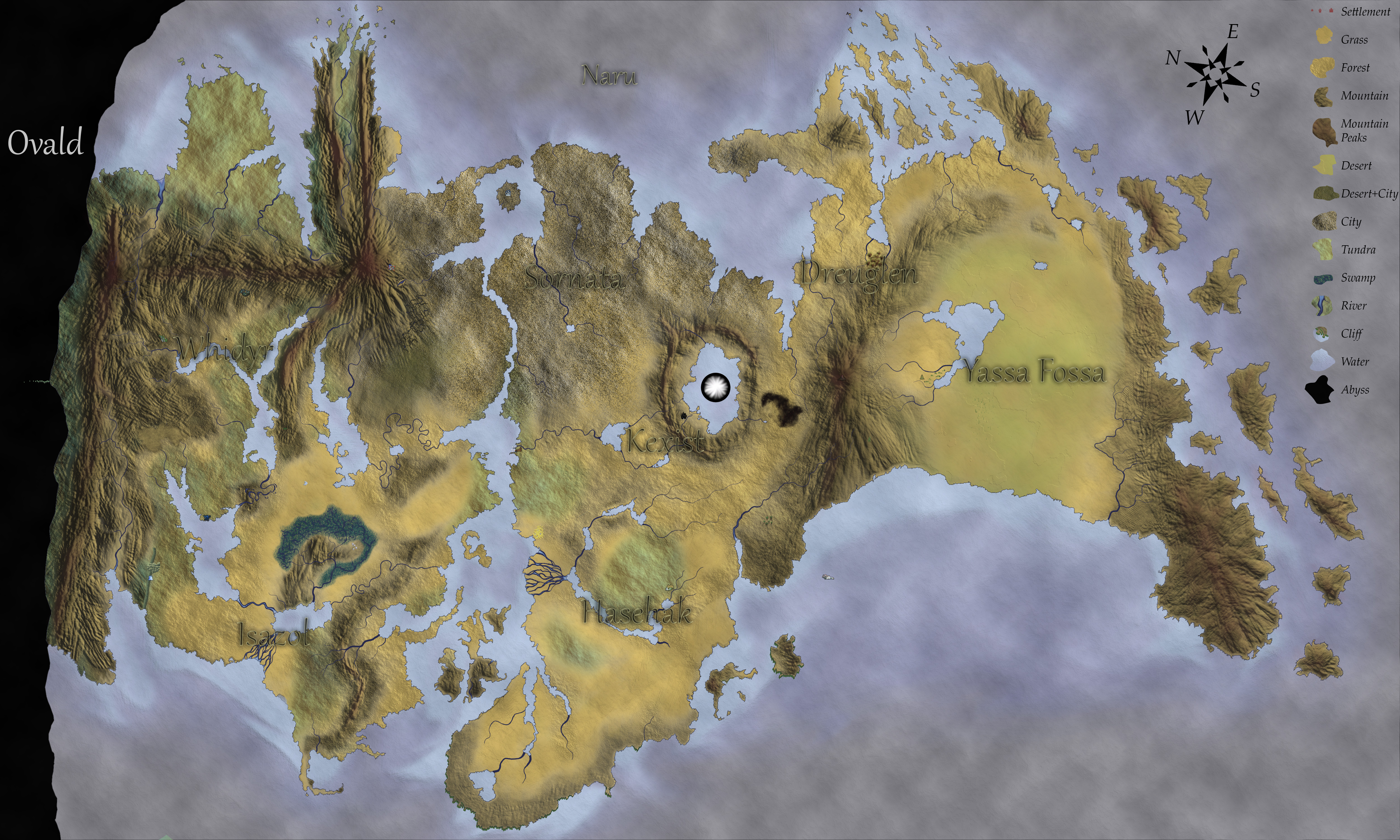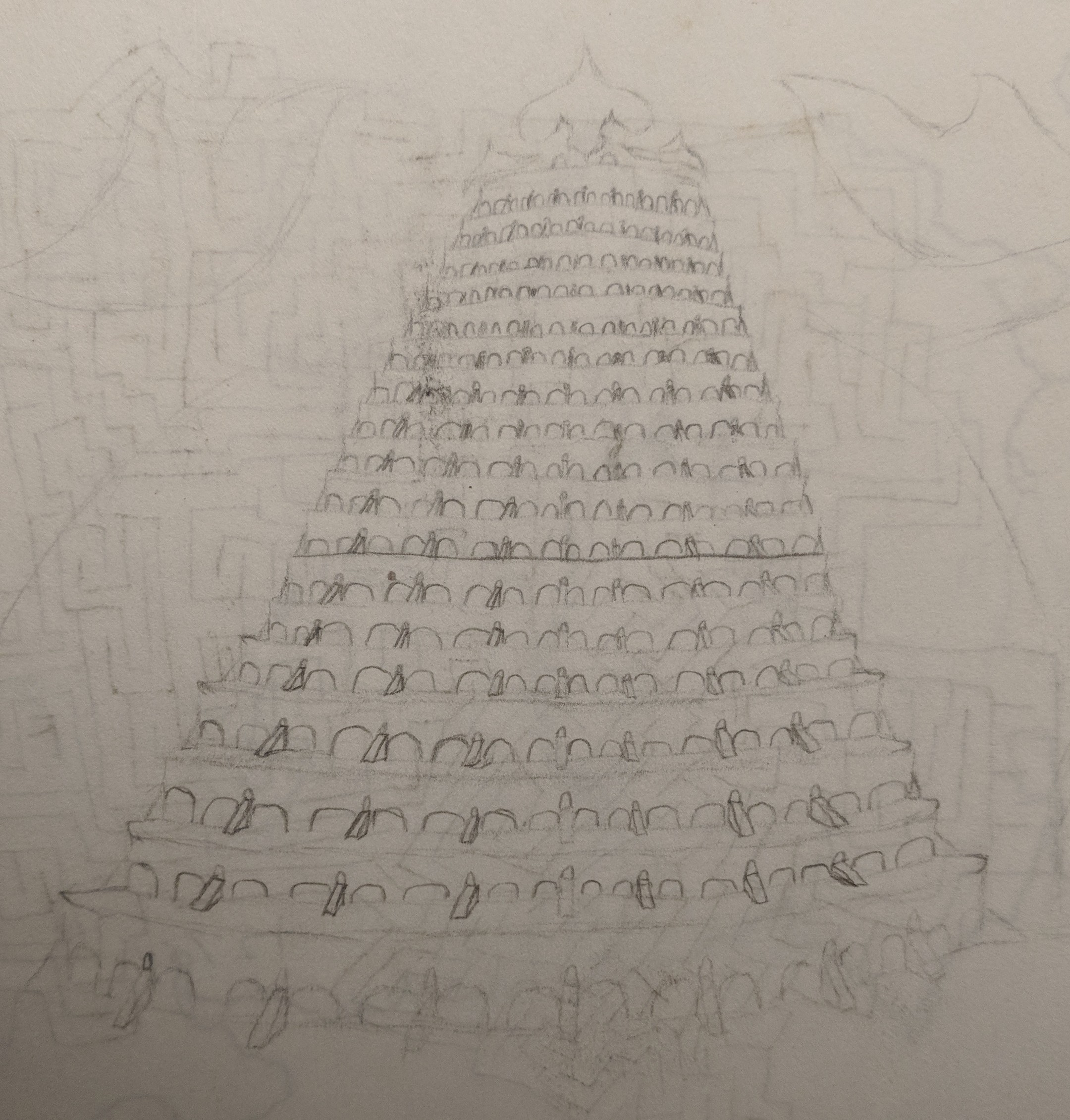Vshawen
Anatomy & Morphology
Life cycle: Egg, larva, pupa, adult stage 1 (noble, warrior, crafter, worker), (if no queen/king in colony) pupa, adult stage 2 (queen/king)Vshawen can "cry" into a pool below their lowest eyes to share with others who would be in need of nourishment. Mainly a means of feeding their young, the use also goes to feed those who could not find food for themselves.
Scorpion bodies with thicker heavily plated tals
The Phor tails are long and flat on the inside and spiky on the outside as a means of self defense
The tail is divided by bands of hard exoskeleton plates and soft joints for them to be able to move it freely, stretch it, and retract it
The tip of their tail is one (slightly larger than the other bands) exoskeleton tetrahedron-esk shape and the tip is open to their body that secretes silk
Their silk is white and slick and strong enough to stop a rampaging Roqbherg in its tracks
Slightly elastic silk
Their front claws have two tarsus’ on their mandibles
These tarsus also have joints half way down them
The tarsus and mandibles are long and thin
They have eight legs with two tarsus on each foot
Each Vshawen have a mask that they make as soon as they are born (even if they can wear it until a they grow a few weeks
Their heads are not on their bodies but are on a stem of a neck
Their neck is a similar structure to their tail with bands of exoskeletons and joints
Though the neck is thinner than the body they are able to wear large masks on their face
They have eight eyes that line the side of the mask on the sides of their head
Life Cycle
Egg
The green, sand-colored spherical eggs vary from one to two centimeters in size. It’s often a good sign when the brood is both uniform and large. Having eggs that are too small, too large, have splotches of color, or (something really bad) dented and soft, It’s often an ill omen for the soon-to-be babes.
Larvae
Their diet consists of the same protein-everything mix their Phora receives. Their primary duty for the colony is to both eat to grow and to learn. This comes easy to the larvae as they are naturally curious (though they don’t get to directly express their curiosity until about one year of age when they can speak). It is also fortunate that the amount they eat leaves them fat and immobile so they don’t escape in their efforts to learn more. If one does escape, they will not get very far in the nest before being found and brought back to the Phora.
Their guardian Phoru, who each cares for about five or so in particular, will defend the young with their lives. They constantly clean the larvae by licking and making sure they are with them as much as possible. The Phoru continue to do their other duties (politics and the such) with their charges cupped on their backs. The experience the larvae have by the Phoru’s daily businesses are their lessons and the young will ask questions whenever they can. The Phoru are more than happy to answer them, even if they don’t remember what was said. It becomes quickly apparent which larvae will molt to become Phoru and which will become Phor.
Pupa
Her chamber, when I had entered and no sooner, felt as though I were pleasantly drowning. Needless to say, the conversation needed a proxy elsewhere to continue.
Adult
Habits
Dietary Needs and Patterns
In modern times, the Vshawen have been so successful with their yields that they can feed their entire colonies, grow in numbers, and still have enough to sell to foreigners.
Mating Rituals & Family
The Phor are unable to reproduce and are all Vai (genderless | pronounced Vkx (V+harsh hiss) | Asi )). The Phori and Phoru are majority male, abeling them to grow the colony with the Phora. The other females, or Phoru bre-queens, exist to hastily take the place of their queen should she parish. It is uncommon, still not unheard of, for a colony to have more than one Phoru bred-queen. The Phora chooses one male Phoru to be a Phori, not only to be her main mating partner, but also to help her rule as it is strenuous to do so alone. She weaves him in a specialized webbing for him to go through a metamorphosis to become a Phori, usually taking a few nights.
The older a Phora is, the more likely she will give birth to a female to succeed her, but in the off chance that she does not produce an heir before she dies, or she is killed before she gets too old, The Phoru and Phori start to produce pheromones (due to a lack of mating) that change the gender of a single Phor to female. The Phoru and Phori are able to detect where a Phora is, so once a female is chosen from the pheromones, they stop secreting them so as to not make more than one female. But if more than on female is created the female has the instinct to fight to the death for supremacy.
Vshawen have not only a moral coherence to their caste system, but a biological one too. they have their queen at the top, her chosen behind her, nobles (drones and bred-queens), and the workers. The four kinds of Vshawen in a colony divide further, though their craft does not determine their physique as the class does.
Worker/farmer/crafter, wet nurse/ doctor, warrior/armed services, builders/craftsmen, scribe, preist/Ghoa practitioners
Though nobles have the capability of becoming queen or king, whilst they are not they must have a job and not laze about. so some become governing beings, scholars/ philosophers, and high priests/ Ghoaha. This class are comprised of Phoru and Phoru Bred-queens who are both larger and more intelligent than their lower class brethren.
Original Ecology & Habitat
Those who pass through halls also meticulously write into the webbing of the walls, accomplishing varying purposes. Sometimes it is to state their purpose, to let others know a task is completed or under way. Other times it is more abstract, to tell stories, convey morals and thoughts, and to connect with the others of the colony through more means than vocal or physical interactions.
To make egress too and from the hive easier, they build their nest horizontally into cliffs, mountains, and other rockfaces. The provenance of the earliest colonies lined and perforated the Yassa Fossa desert. The heat of the Sakzyg Oiov and summer’s equinox has them spending most of their time within their hive, leaving warrior Phor to defend their premises.
To make egress too and from the hive easier, they build their nest horizontally into cliffs, mountains, and other rockfaces. The provenance of the earliest colonies lined and perforated the Yassa Fossa desert. The heat of the Sakzyg Oiov and summer’s equinox has them spending most of their time within their hive, leaving warrior Phor to defend their premises.
Hygiene
Bathing: Vshawen use a set of tongues tucked in the sides of their mouths for cleaning. The tongues secret a slime that, when applied, congeals around dirt and grime, making it a matter of sliding it off to the ground. From the structure of their neck, the are able to swivel their heads to reach and wash any part of their body themselves. But this would only be in dire need, and would risk parts twisting irrevocably. So they spend time washing each other, some larger colonies have Phor take this as their dedicated purpose.
ETC
Their verbal communication skills are fairly limited compared to other Rela, even to Oql. They are able to produce mostly clicks and chirps, their languages about vowelless. More than vocal communication, Vshawen rely heavily on written language, for themselves and for the rest of the world.All colonies of Vshawen have pure monarchy with the Phora having most power due to her being the only one to keep the colony going. If they have other species within their dominion or rule, or if they are apart of a larger social system, their monarchist tendencies only affect the colony.
There was once numerous colonies of vshawen who united to one to take Mount. Kornal from the Roqbherg who lived there. The Roqbherg used it as it was plentiful for what they ate, but the vshawen saw it to expand and was plentiful in the resources to grow a massive colony. They did lose, but remnants of that massive colony still exist today, the primary descendent Phora being queen of @Soka and has a seat in the Aldcom . During their war, the Roqbherg had aid from other large Rela governments, mainly of the Aldcom, having the Vshawen see what it is to unite with other foreign species. They joined the Aldcom soon after.
The queen often takes over the body of one of her Phor when needing to convers withan external entity. Most Phor see it as an honor to be controlled by their Phora.
Genetic Ancestor(s)
Colony Classes
Phora
Queen
OmnivoreAverage Lifespan
200-400 years
Appearance
Twice as large as the Phori/PhoruTheir tail has no plating on it and is swollen with eggs rather than silk
Her mask Is the most intricate than any other Vshawen and tends to have a greater design of an eye
Her claw tarsus and mandible are smaller but more dexterous than the Phor, Phori/Phoru
Size
3.8-4 meters from head to tail tip (while extended)
1-1.2 meters tall (from ground to top of head)
Phori
King
OmnivoreAverage Lifespan
200-400 years
Appearance
Larger than the Phor with much more intricate masksTheir silk is mixed with their sperm making the sillk have a pearly luster as well as being stronger.
Their silk is also more brittle than elastic when it drys
Their tails are thicker and produce more silk, and are not as spiky on the outside side of their tail
The tail is more cylindrical than flat or triangular
Size
1.5-2 meters from head to tail tip (while extended)
.5-.7 meters tall (from ground to top of head)
Phoru
Noble
OmnivoreAverage Lifespan
100-200 years
Appearance
Larger than the PhorMuch more intricate masks than the Phor
Their silk is mixed with their sperm making the sillk have a pearly luster as well as being stronger.
Their silk is also more brittle than elastic when it drys
Their tails are thicker and produce more silk, and are not as spiky on the outside side of their tail
The tail is more cylindrical than flat or triangular
Size
80-120 centimeters from head to tail tip (while extended)
40-60 centimeters tall (from ground to top of head)
Phor
Worker
HerbivoreAverage Lifespan
50-80 years
Appearance
Size50-75 centimeters from head to tail tip (while extended)
10-30 centimeters tall (from ground to top of head)






Comments